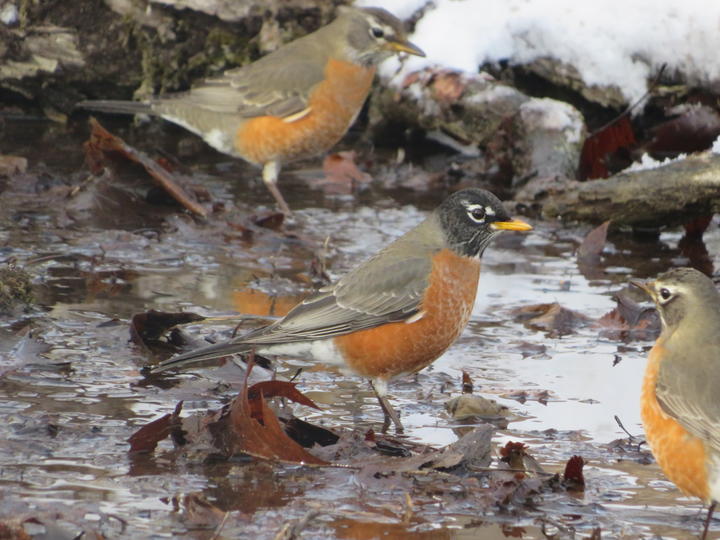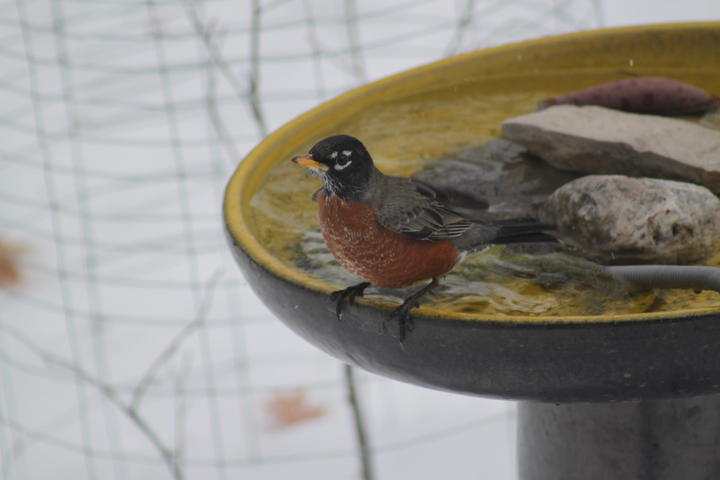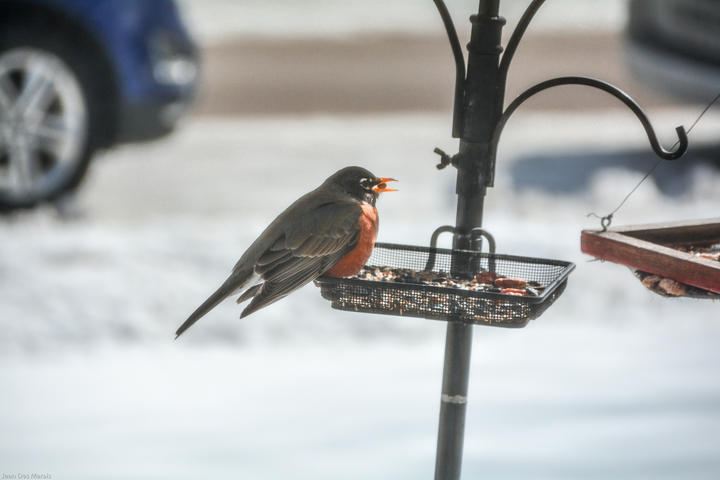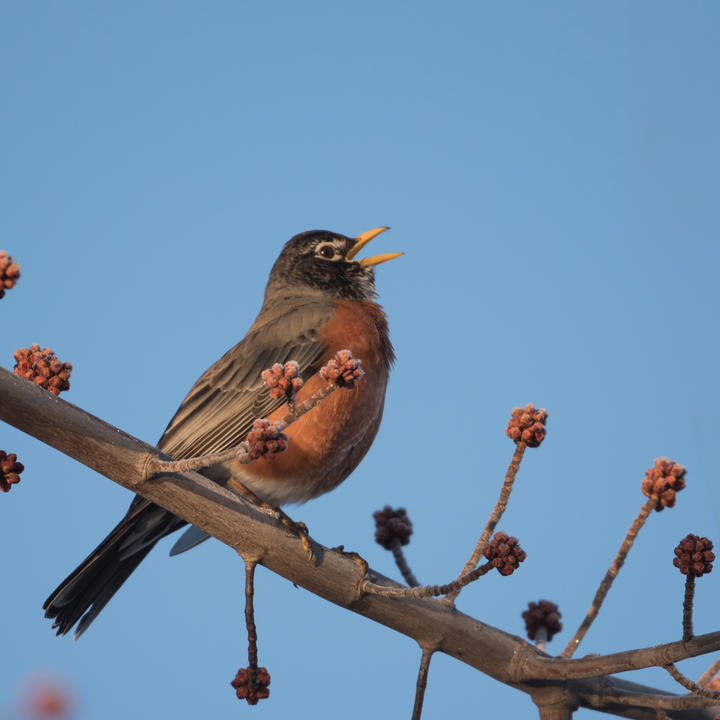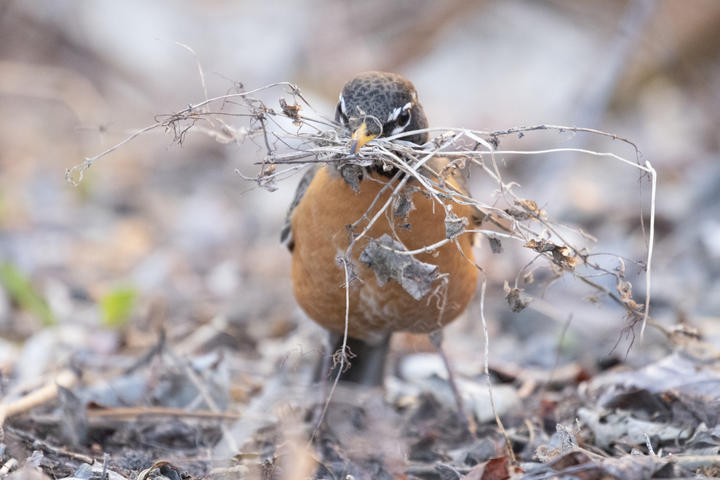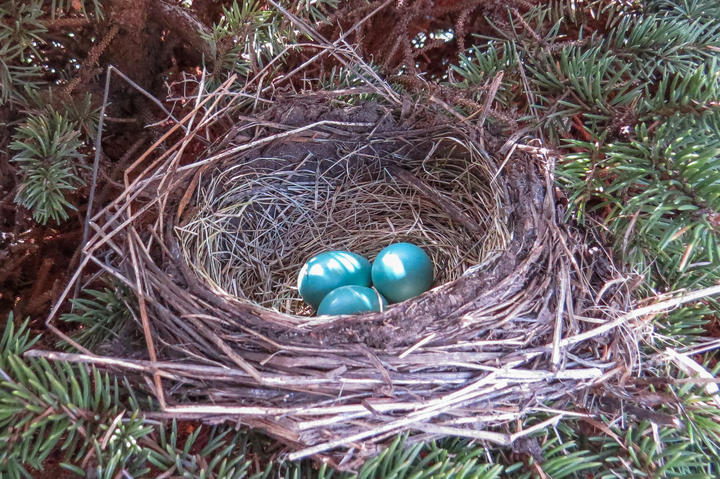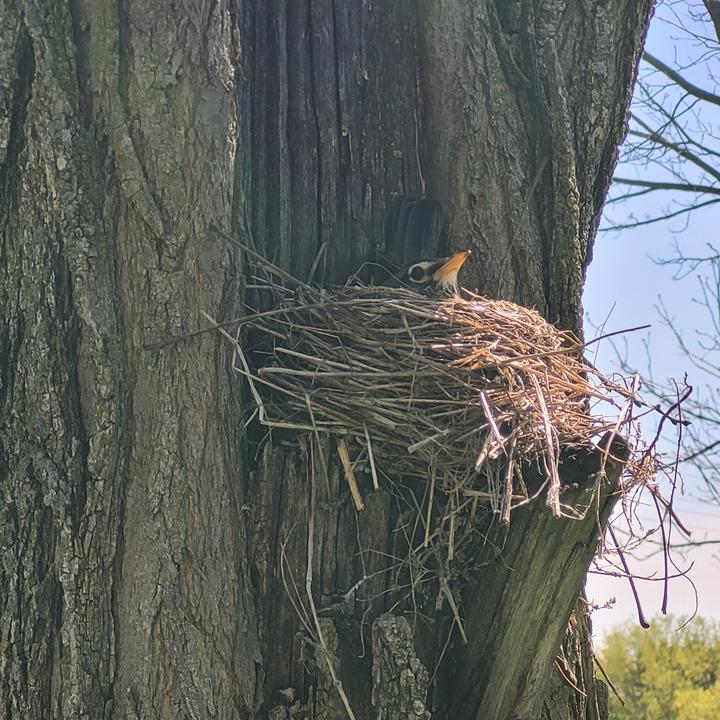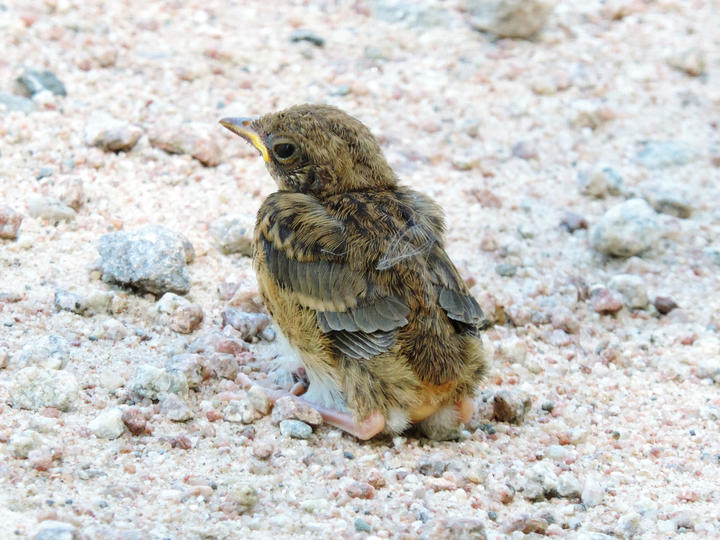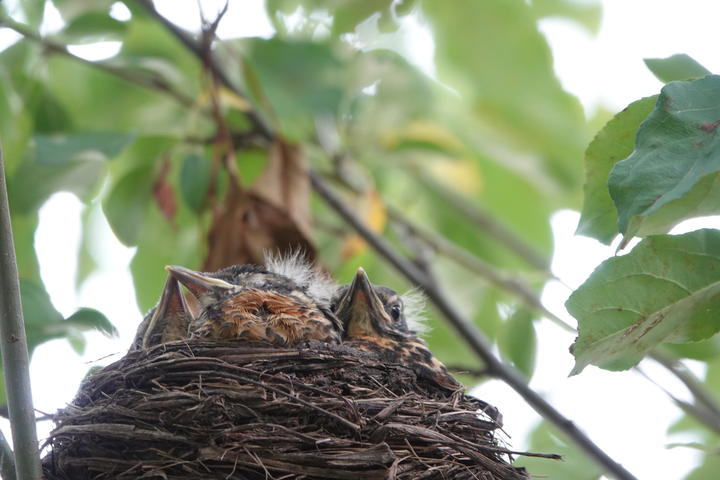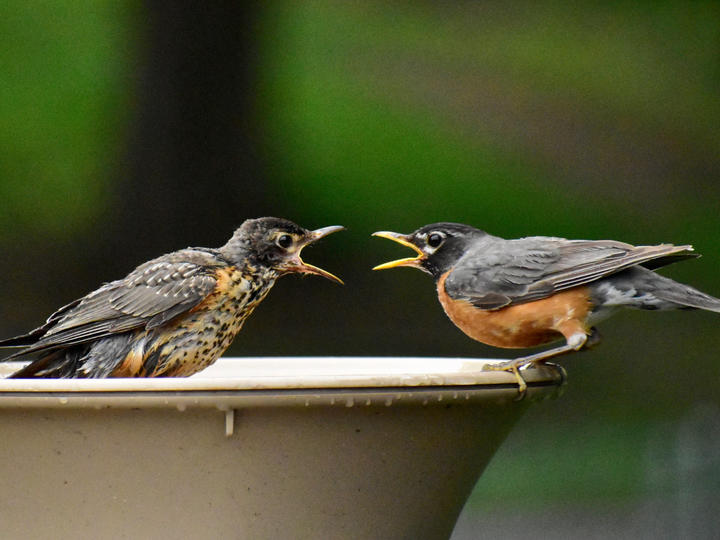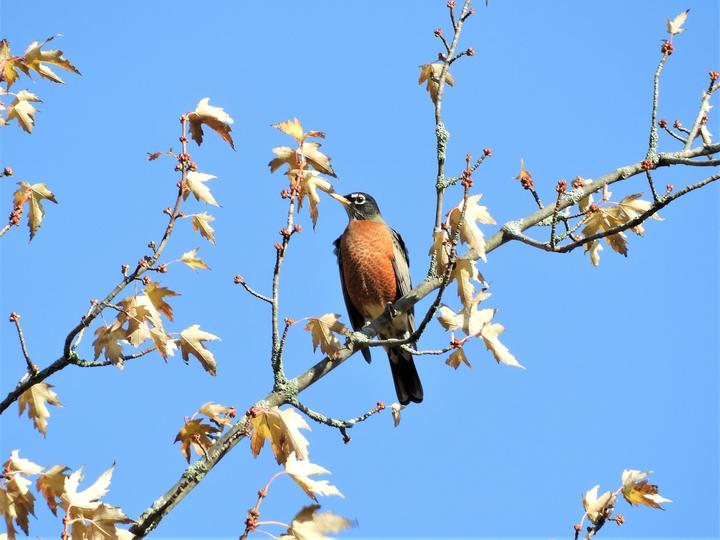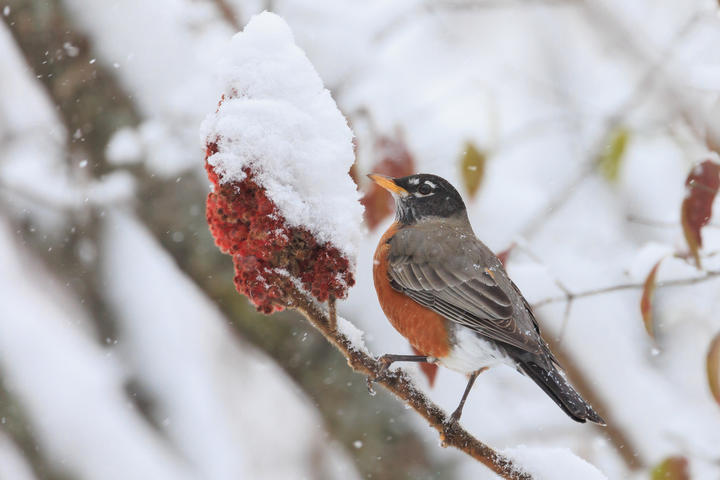More names for this bird
Anishinaabemowin: Opichi
Dakota: Ṡiṡoka
The Dakota and Anishinaabe were among the earliest people to name Minnesota’s plants and animals, as well as to understand them in relation to Minnesota’s climate and seasons. Those original names are still in use, and several are included on the Season Watch website.
Latin (or scientific name): Turdus migratorius
The scientific community has a convention of assigning agreed-upon Latin names to every kind of organism. Using scientific names helps people communicate confidently about the same organism and organize lifeforms based on how closely related they are.
Page contents
About the American robin
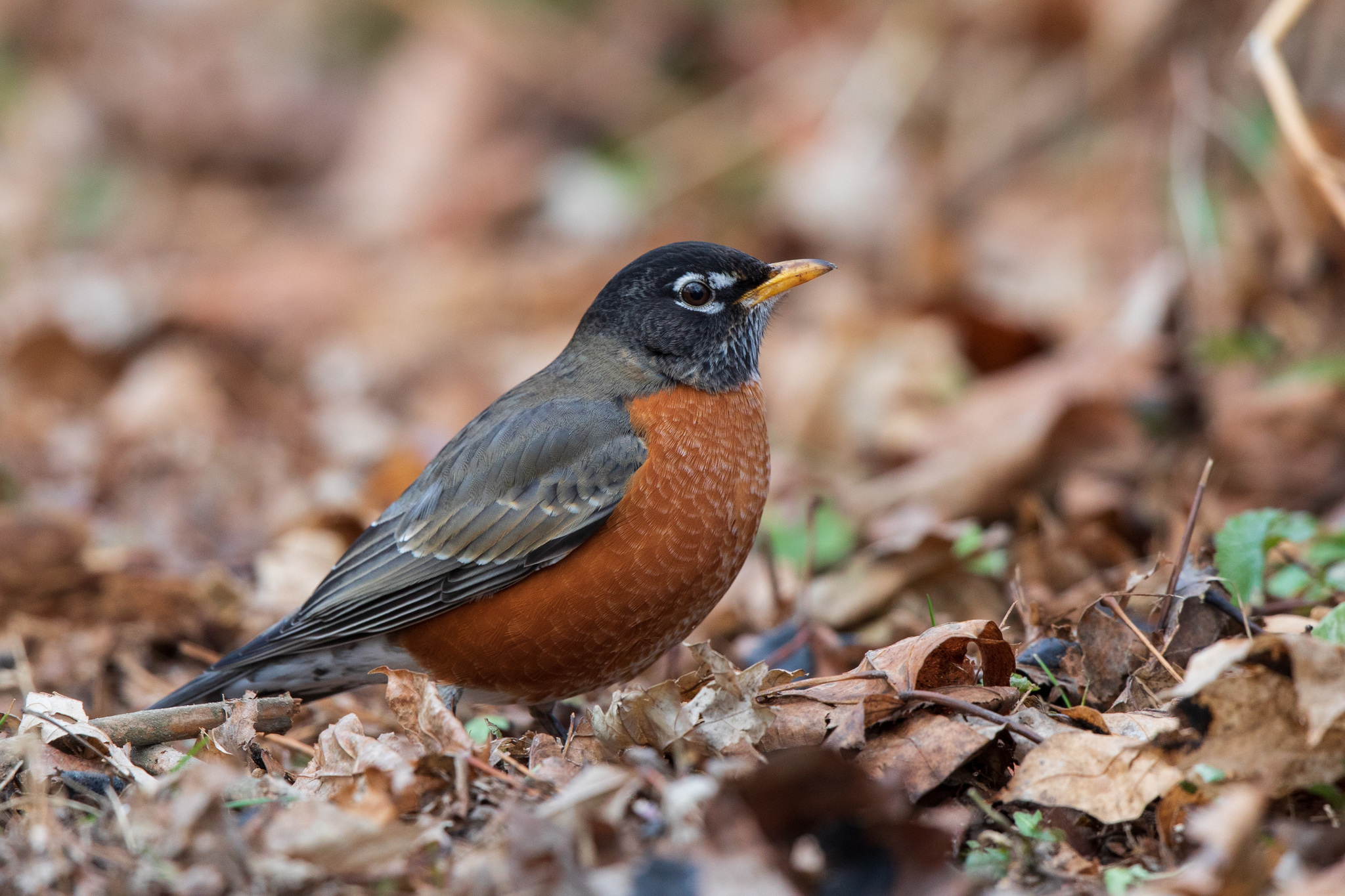
January 16, 2020, Toronto County, Ontario Canada
Photo © brian stahls, some rights reserved (CC-BY-NC)
iNaturalist observation
About the American robin
- The American robin is a songbird with a rusty orange breast, melodic song and is widely seen in Minnesota.
- They eat a large quantity of earthworms in the spring and summer. In fall and winter, robins turn mostly to fruits due to their availability and high energy content.
- Fun fact: One study suggested that American robins may try to round out their diet by selectively eating fruits that have bugs in them.
- American robins migrate short distances. Expand the "Migration animation" section below to learn more.
Migration animation
Migration animation
Click the full-frame icon (lower right corner of video) to play at full size.
More about eBird's abundance animations
eBird data from 2006-2020. Estimated for 2020. Fink, D., T. Auer, A. Johnston, M. Strimas-Mackey, O. Robinson, S. Ligocki, W. Hochachka, L. Jaromczyk, C. Wood, I. Davies, M. Iliff, L. Seitz. 2021. eBird Status and Trends, Data Version: 2020; Released: 2021. Cornell Lab of Ornithology, Ithaca, New York. https://doi.org/10.2173/ebirdst.2020
Visual guide to phenology
Unlike some birds, adult American robins do not undergo visibly obvious changes in their plumage or bill color. Watch for changes to robins' presence (or absence), abundance, and behaviors at different times of year. Also, pay attention to when young-of-year hatch, fledge, and develop.
Note to observers
This page explains general clues to watch and listen for when observing American robin phenology. However, this page does not explain how to identify this bird or collect data in a standardized way.
- For help with identification, see The Cornell Lab's All About Birds.
- For guidance on collecting data, see Nature’s Notebook.
Audio resources
A bird's song is a special vocalization associated with breeding behaviors such as setting up and defending territories, finding mates, and courtship. In Minnesota, American robins do not generally sing year-round. Rather, they only sing during times of year that are suitable for breeding.
Here are three examples of the American robin's song:
Recording by Ted Floyd, (xeno-canto.org/364638) CC BY-NC-SA 4.0
Recording by Ted Floyd (www.xeno-canto.org/367984) CC BY-NC-SA 4.0
Recording by Seth Beaudreault (www.xeno-canto.org/738724) CC BY-NC-SA 4.0
Robins call year-round. Because robins are rare or even absent from some areas of Minnesota during winter, their call is a helpful indicator of their seasonal presence. After recognizing a robin's call, the next step is to locate the bird and watch for behavioral clues to its life cycle stage or activities. Here are three examples of calls by American robins:
Recording by Paul Marvin (www.xeno-canto.org/165302) CC BY-NC-SA 3.0
Recording by Matthias Feuersenger (www.xeno-canto.org/253522) CC BY-NC-SA 4.0
Recording by Jarrod Swackhamer (www.xeno-canto.org/287516) CC BY-NC-SA 4.0
Graphs and historical data
Note: The Orientation Center provides a map, as well as information on reading graphs; interpreting summary statistics, who collected the data and how; and how to download datasets for independent exploration.
First seen
- Earliest: February 13 (occurred in 2012)
- Average: March 22
- Latest: April 2 (occurred in 2013)
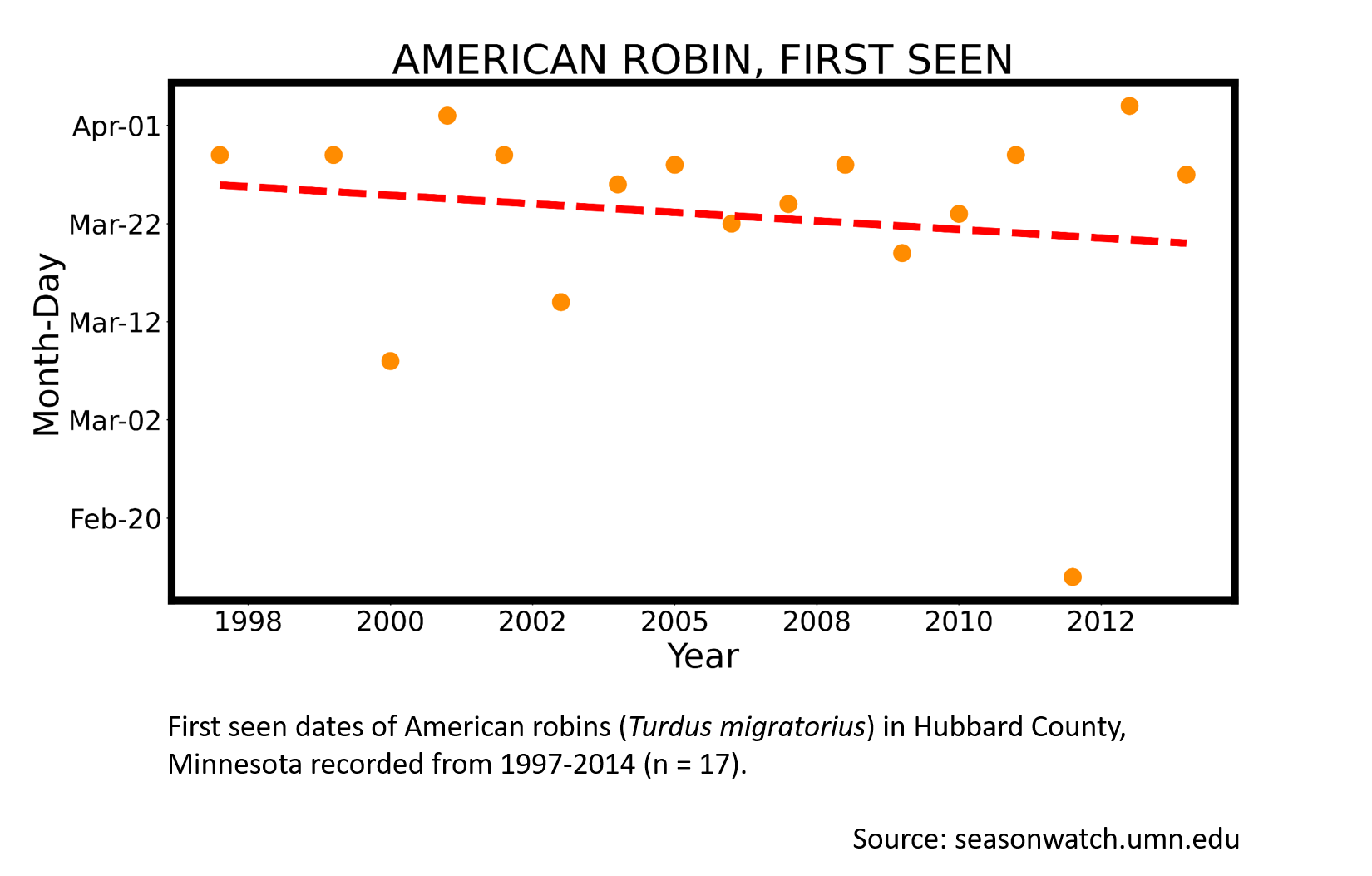
First flock of autumn migrators
- Earliest: August 8 (occurred in 1994)
- Average: September 2
- Latest: October 6 (occurred in 1987)
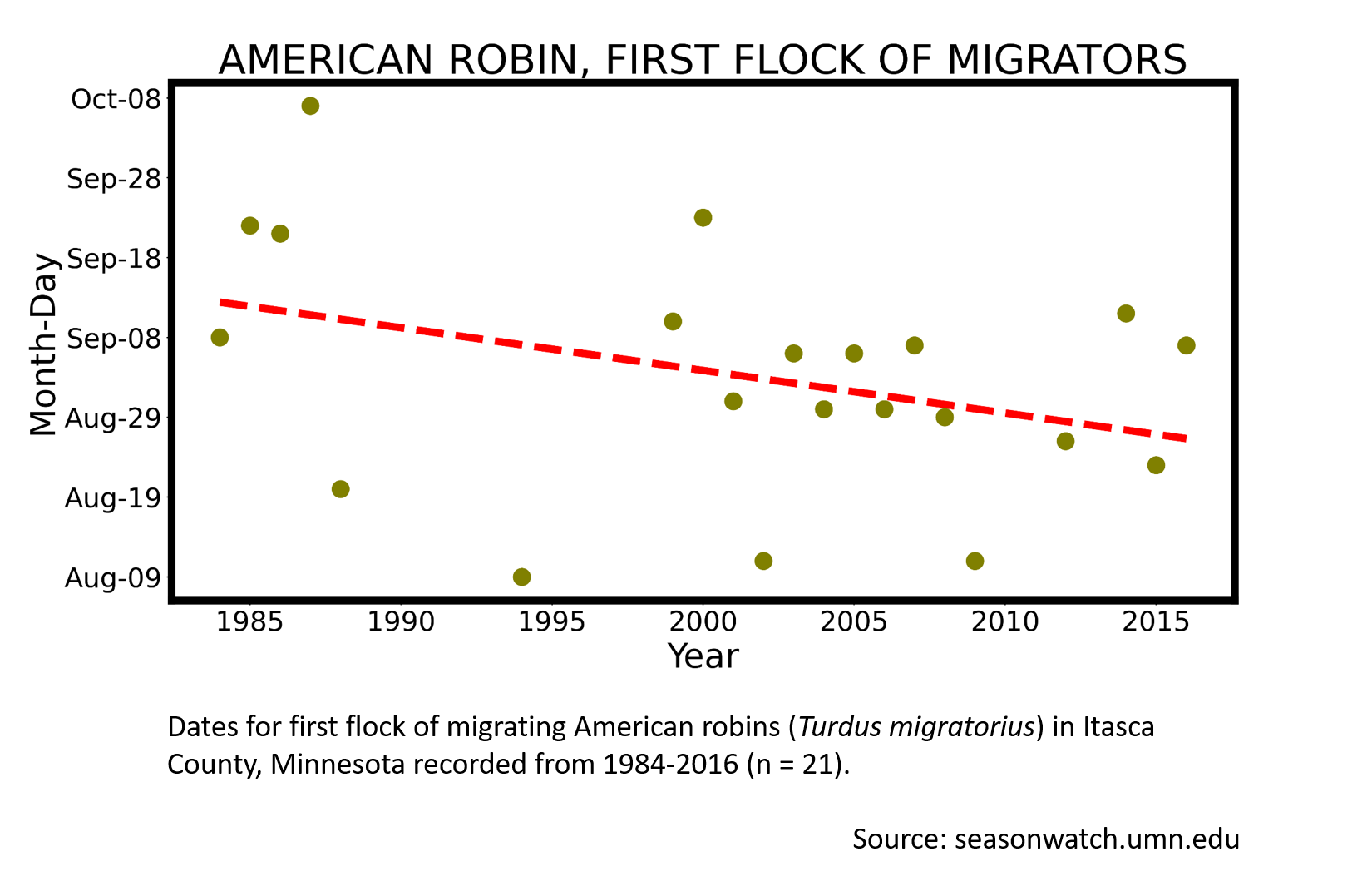
Last seen
- Earliest: October 18 (occurred in 1999)
- Average: November 17
- Latest: December 28 (occurred in 1992)
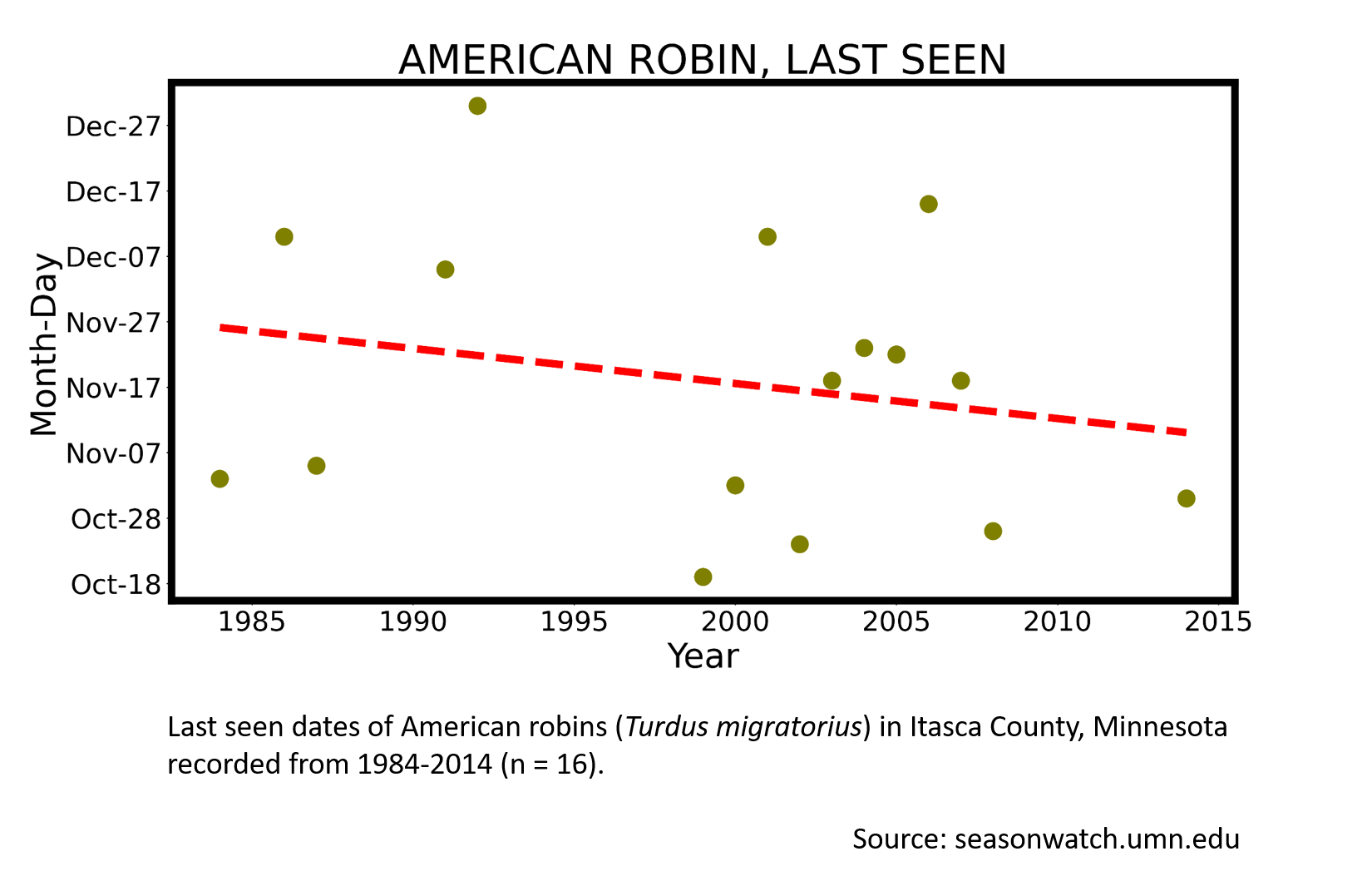
First seen
- Earliest: March 18 (occurred in 2000)
- Average: March 28
- Latest: April 9 (occurred in 2002)
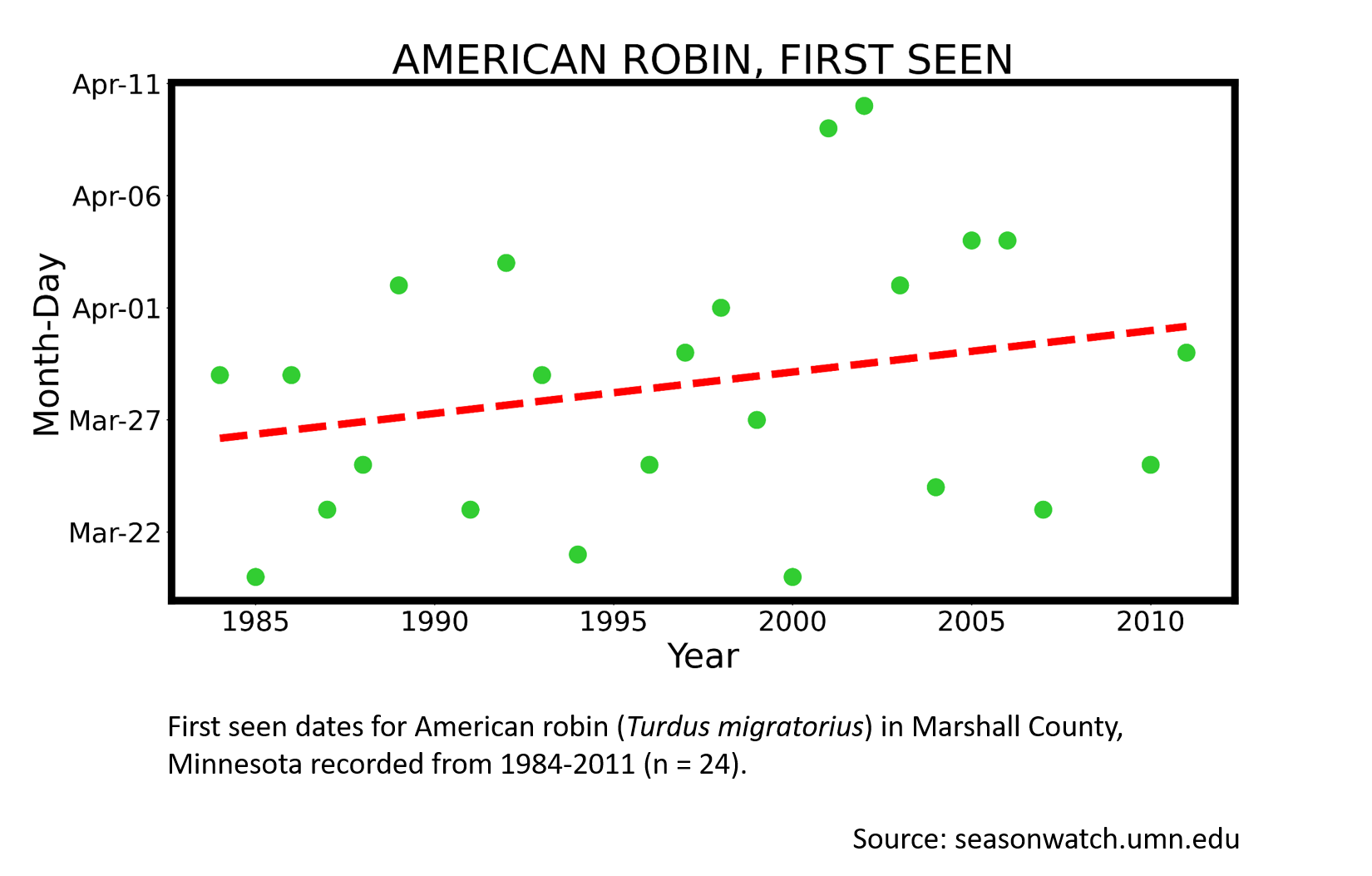
More resources
Keep exploring Season Watch
Keep exploring Season Watch
Co-author: Jayme Hogan, Minnesota Master Naturalist
